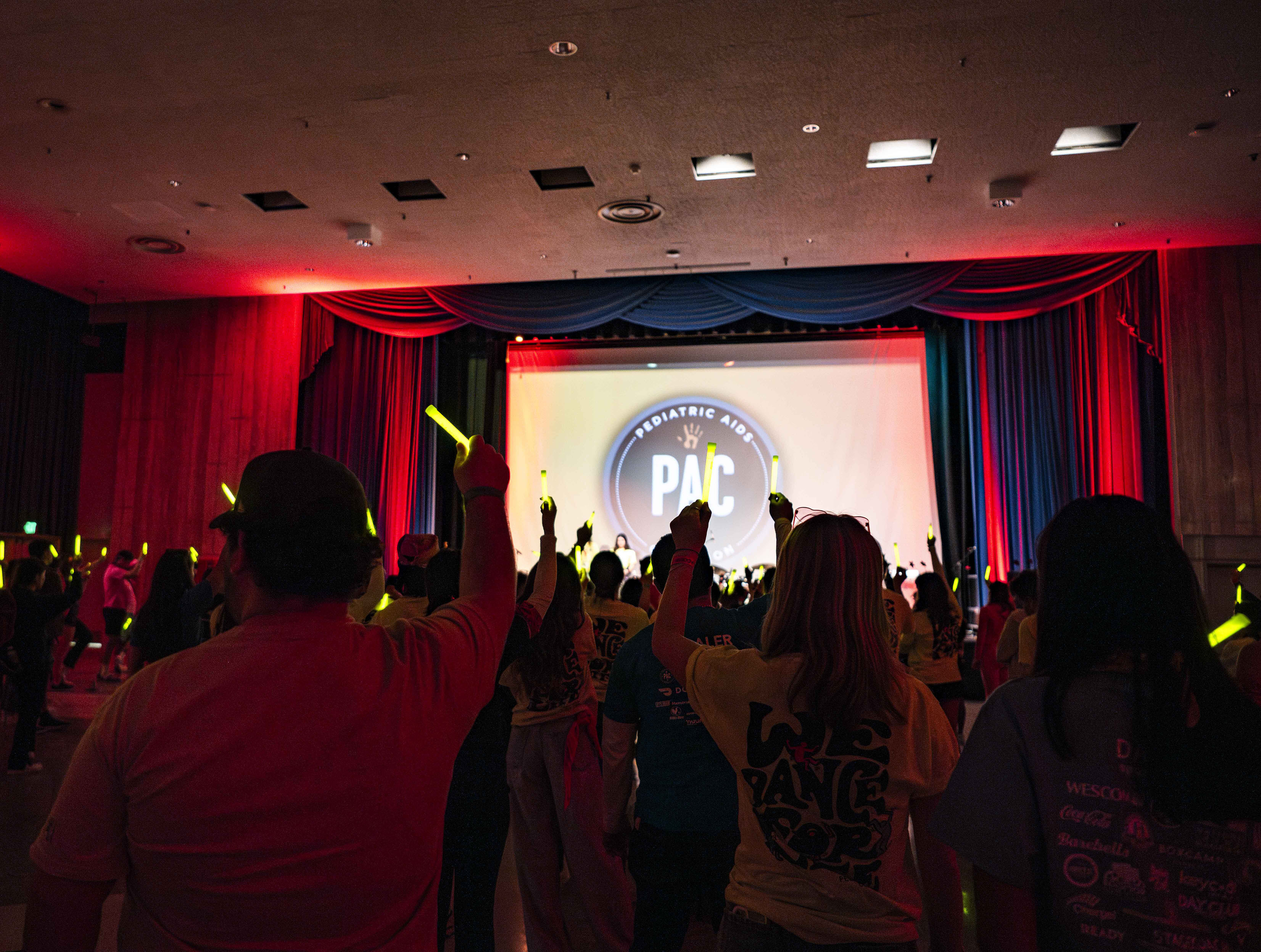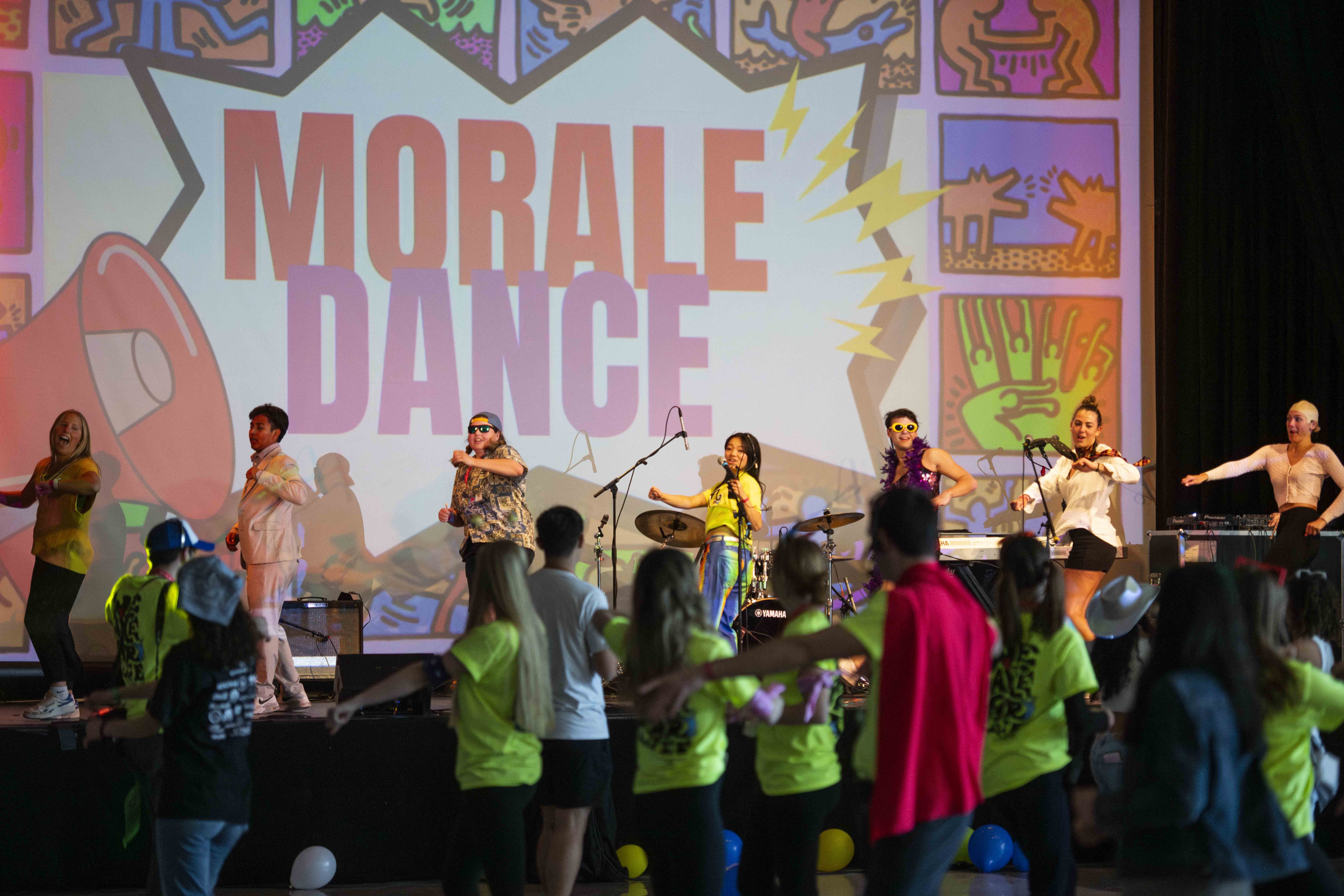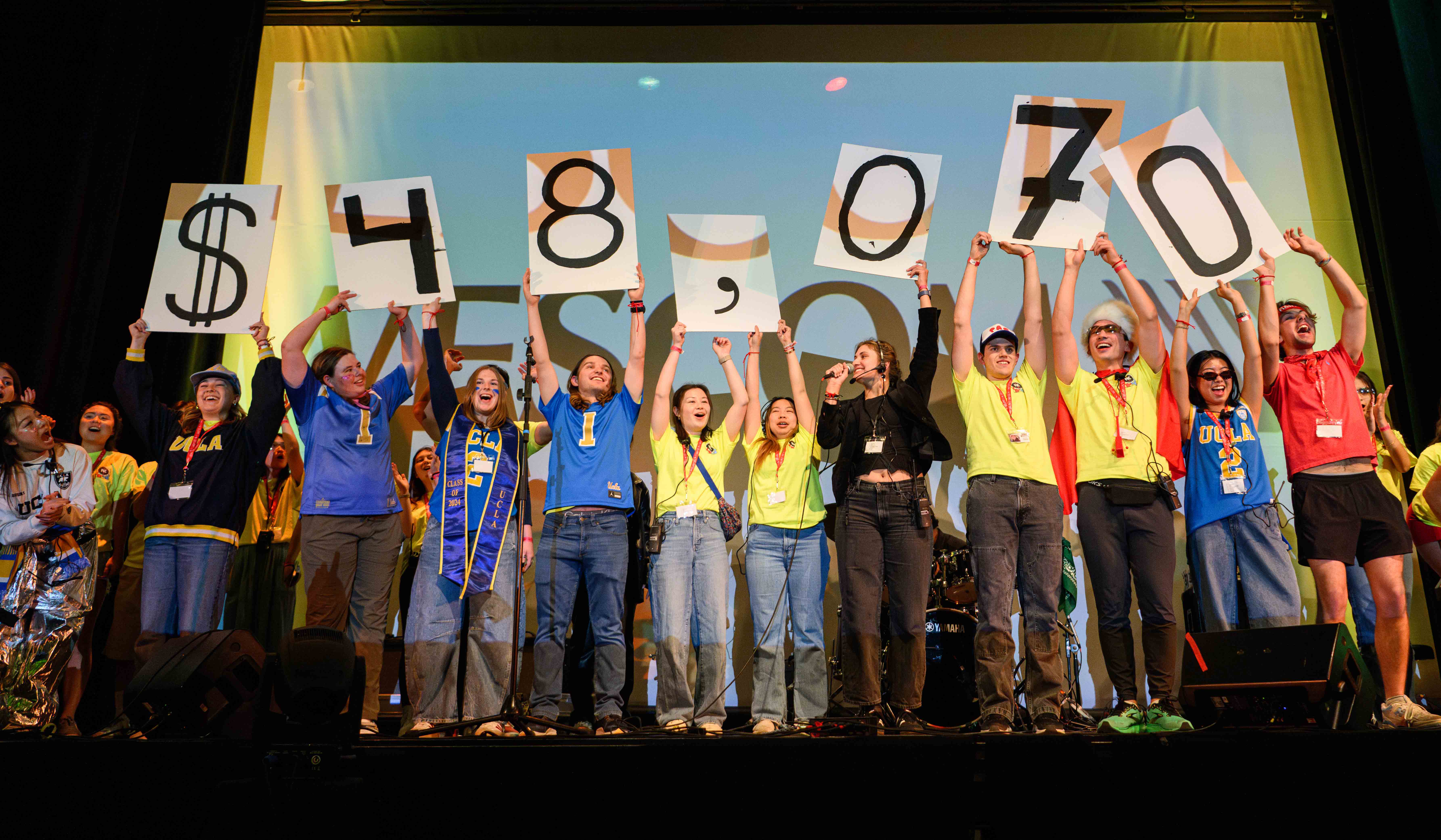PAC holds vigil for those affected by HIV/AIDS at 2025 Dance Marathon
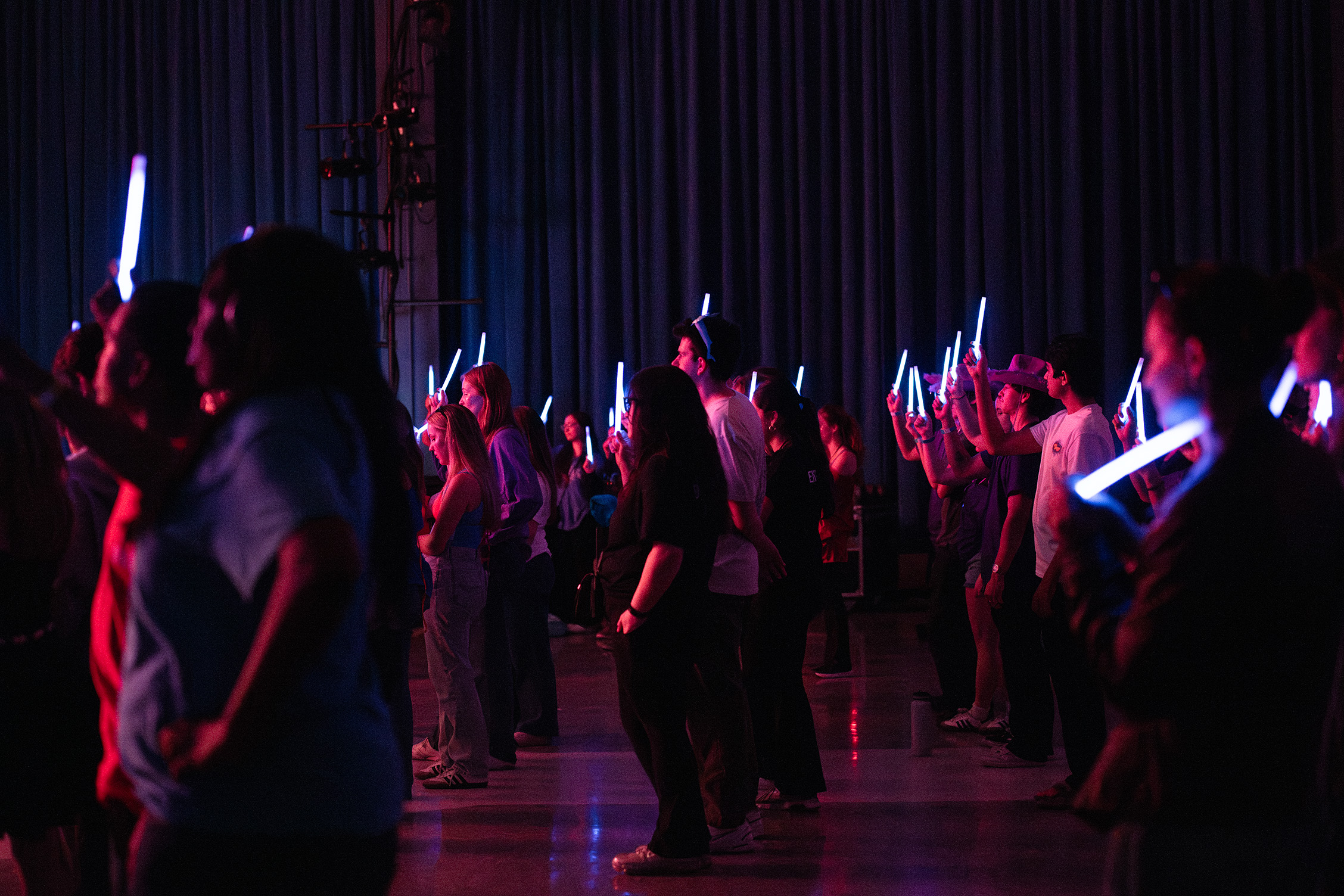
Pictured are 2025 Dance Marathon attendees holding up glow sticks. The vigil is the marathon’s way of highlighting the people who have been effected by HIV/AIDS. (Selin Filiz/Daily Bruin)
By Katy Nicholas
March 1, 2025 9:34 p.m.
This post was updated March 2 at 8:22 p.m.
The 2025 Dance Marathon vigil, hosted by the Pediatric AIDS Coalition at UCLA, worked to empower a new generation by breaking stigmas and busting myths surrounding HIV/AIDS.
Dance Marathon is an all-day fundraiser created to raise awareness for Pediatric AIDS research, and the vigil is a portion of the event that features those directly affected by its efforts. Caterina Marji, fourth-year physiological science student and co-director for cause and community relations at PAC, said the vigil is the one part of Dance Marathon that is not a big dance party, where participants can reflect on what they are dancing for and celebrating.
“We meditate on what it means to fight for HIV and how we’re going to make that change,” Marji said. “We remember those who have been affected by and died from HIV-related illnesses.”
[Related: Pediatrics AIDS Coalition at UCLA kicks off its annual Dance Marathon fundraiser]
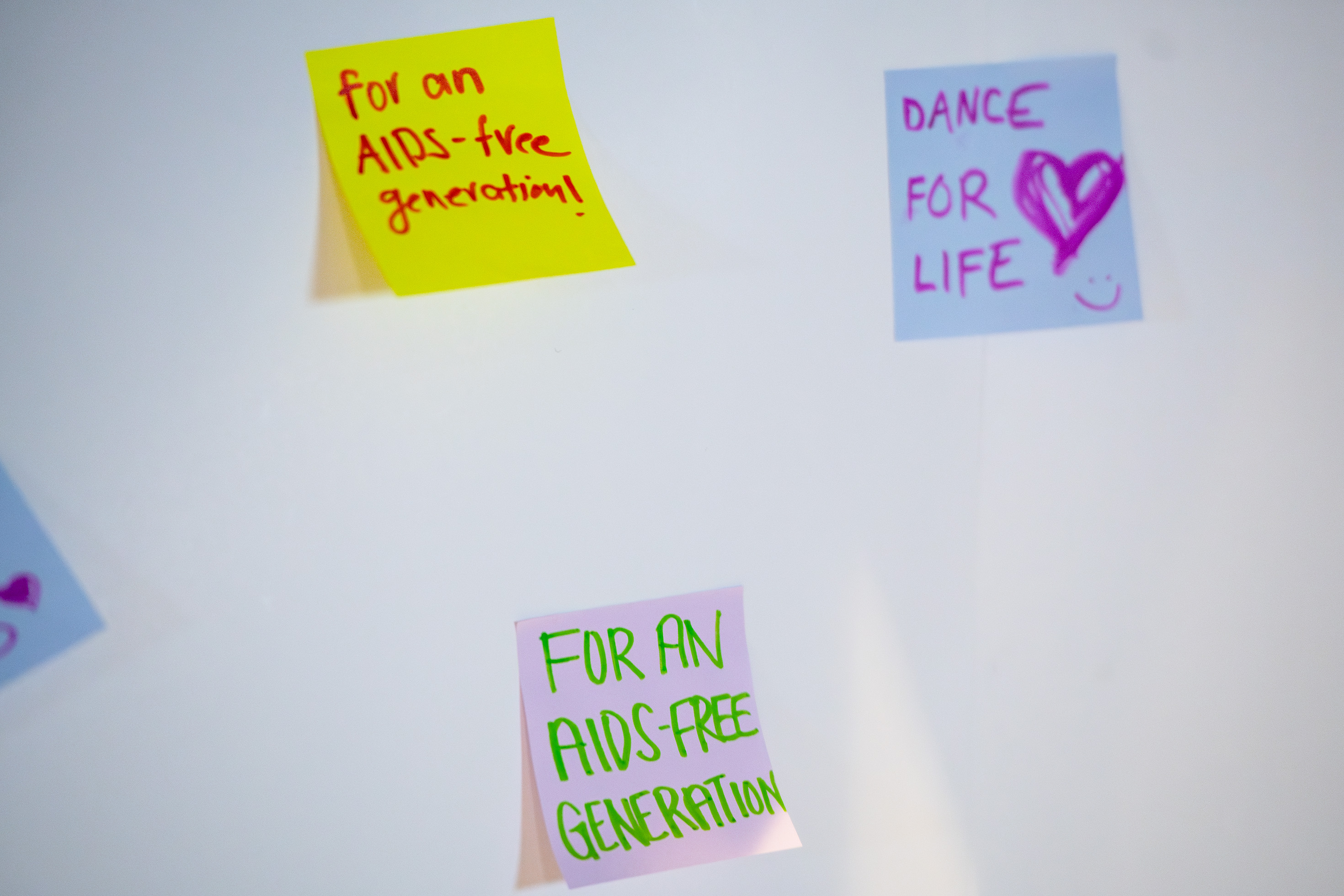
The hour began with an introduction from Marji and her co-director, Ava Western, a fourth-year human biology and society student, educating participants about HIV/AIDS, discrimination and the stigma that exists around the disease. This was followed by a video from the Elizabeth Glaser Pediatric AIDS Foundation, which receives some of the proceeds generated by the event. Marji said 70% of the money raised at Dance Marathon goes directly to EGPAF followed by the Laurel Foundation and the UCLA AIDS Institute.
The video was followed by live testimonies from children who have attended Camp Laurel, a camp for children whose parents have been diagnosed with HIV/AIDS. Adults spoke about how much the camp meant to them as children and kids currently in the program talked about their favorite memories from camp. After this, there was an interactive activity for audience members to raise glow sticks representing the myths they might have heard about HIV/AIDS.
Marji and Western took extra care this year to educate participants about how the new United States administration has affected their beneficiaries’ efforts in creating an AIDS-free generation, Marji said. According to Marji, some of the efforts of PAC’s largest beneficiary, EGPAF, have been paused due to the freeze in federal funding. Western said this makes it even more important to stay active, positive and passionate about their work.
“We wear highlighters and our highlighters represent the fact that we won’t hide, we won’t stand down,” Marji said. “We are an organization fighting for something that’s stigmatized, but we refuse to be stigmatized.”
Fourth-year physiological science student Fiona Choi said the vigil is the most important part of Dance Marathon because it brings the community together to represent how many people are actively taking a stand against HIV/AIDS. She said even a couple of dollars can pay for someone’s treatment and change their life, which gives everybody a chance to make a difference.
Even if they do not donate, having people come and learn about the cause is an important outcome of Dance Marathon, Choi added. She said PAC has other fundraisers throughout the year, which act as “mini” dance marathons, featuring some of the bands that perform at the larger event. Marji said the music and energy PAC brings to its cause is a unique aspect of the organization.
[Related: Dance Marathon 2024: Dance Marathon vigil encourages students to reflect on the goal of the event]

“There are a lot of other global health organizations, but this is the one that creates a very optimistic and empowering approach to HIV and AIDS,” Marji said. “There’s a lot of pessimism surrounding it, that’s not what we need.”
As the vigil came to an end, all the participants formed a circle on the dance floor, and organizers strung a red thread through all of their hands. This thread represents the large, global community that is connected by the shared mission of finding a cure for HIV/AIDS. The strings were then cut and tied around participants’ wrists to represent their ongoing commitment to the cause.
“The urgency, the sadness, the hope,” Marji said. “Those emotions are the fuel. They’re the foundation to the action … you are now advocates for the 39 million people living with HIV.”


